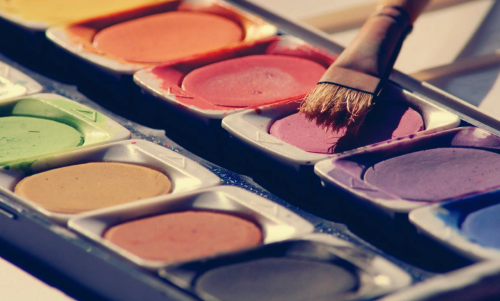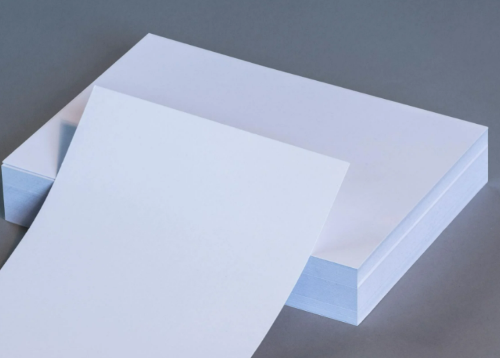
Titanium dioxide (TiO₂) is a versatile and widely used compound known for its unique properties, such as excellent brightness, high refractive index, and strong UV light-absorbing capabilities. Its broad applications span industries, from cosmetics to construction. Below, we explore the common uses of titanium dioxide and its significance in various sectors.
1. Pigments in Paints and Coatings
Titanium dioxide is the most commonly used white pigment in paints and coatings. Its exceptional ability to scatter light provides opacity and brightness, enhancing coverage and durability. It is also resistant to fading, making it an ideal choice for exterior paints and coatings exposed to sunlight. This durability ensures that buildings, vehicles, and other painted surfaces maintain their aesthetic appeal over time.
Additionally, titanium dioxide’s UV-blocking properties protect underlying materials from degradation caused by sunlight, making it a critical component in industrial and architectural coatings.

2. Sunscreen and Cosmetics
One of the most popular applications of titanium dioxide is in sunscreen formulations. Its ability to reflect and scatter both UVA and UVB rays helps protect the skin from harmful effects like sunburn, premature aging, and even skin cancer. As a mineral-based sunscreen ingredient, titanium dioxide is preferred for its non-irritating properties, making it suitable for sensitive skin.
In cosmetics, titanium dioxide is used as a whitening and brightening agent in products like foundations, powders, and lipsticks. It also improves texture and offers a smooth, matte finish, enhancing the user experience.
3. Plastics and Polymers
Titanium dioxide is widely incorporated into plastics to improve opacity, durability, and UV resistance. Its light-scattering ability enhances the appearance of products by providing a uniform white or bright coloration. Common applications include food packaging, PVC pipes, and other household and industrial items.
In outdoor applications, such as garden furniture or window frames, titanium dioxide prevents UV-induced degradation, maintaining the material’s strength and appearance over time.
4. Paper Production
The paper industry uses titanium dioxide to improve the brightness, opacity, and whiteness of paper products, including printing paper and packaging materials. Its inclusion in coatings enhances the paper’s smoothness and ensures high-quality printability. This makes it an essential ingredient in high-end paper products used for magazines, brochures, and specialty packaging.

5. Food and Pharmaceutical Applications
Titanium dioxide is approved for use as a food additive (E171) in various countries. It enhances the brightness and whiteness of food products like candies, chewing gum, and powdered foods. However, its use in food has been subject to scrutiny in recent years due to potential health concerns, leading to regulatory changes in some regions.
In pharmaceuticals, titanium dioxide is used as a coating material for tablets and capsules. It improves the visual appeal of medications and protects the active ingredients from degradation caused by light and oxygen.
6. Photocatalytic Applications
Titanium dioxide’s photocatalytic properties are utilized in environmental and energy-related applications. When exposed to UV light, titanium dioxide acts as a catalyst to break down organic pollutants, bacteria, and harmful gases. This makes it valuable in:
- Self-cleaning surfaces: TiO₂ coatings are applied to windows, tiles, and facades to keep surfaces clean by breaking down dirt and organic matter.
- Air purification: Air purifiers and coatings on walls or ceilings use TiO₂ to eliminate pollutants and improve indoor air quality.
- Water purification: In water treatment systems, titanium dioxide is used to degrade contaminants and ensure cleaner water.
7. Ceramics and Glass
Titanium dioxide is used in ceramic and glass production for its ability to enhance brightness and durability. It acts as a flux in ceramics, improving the production process and the final product’s quality. In glass, titanium dioxide increases refractive index and improves UV protection, making it a crucial ingredient in specialized glasses like those used in eyewear and solar panels.
8. Energy Applications
In renewable energy technologies, titanium dioxide is a key component in dye-sensitized solar cells (DSSCs), where it serves as a semiconductor to enhance the efficiency of light absorption and energy conversion. Its affordability and non-toxic nature make it an attractive material for advancing solar energy solutions.
Benefits and Challenges
The versatility of titanium dioxide lies in its unique physical and chemical properties. Its high stability, non-toxicity, and effectiveness as a UV absorber have cemented its role across diverse industries. However, recent concerns about its safety, particularly in food applications, have prompted stricter regulations and the exploration of alternative materials.
In industrial settings, titanium dioxide dust can pose health risks, necessitating proper safety measures during handling and production. Ongoing research aims to address these challenges and improve the sustainability of its applications.
Conclusion
Titanium dioxide plays a vital role in multiple industries. From protecting skin against harmful UV rays to enhancing the durability of paints and coatings, its applications are vast and impactful. As technology advances, titanium dioxide continues to find innovative uses. For more titanium products, please check Advanced Refractory Metals (ARM).

